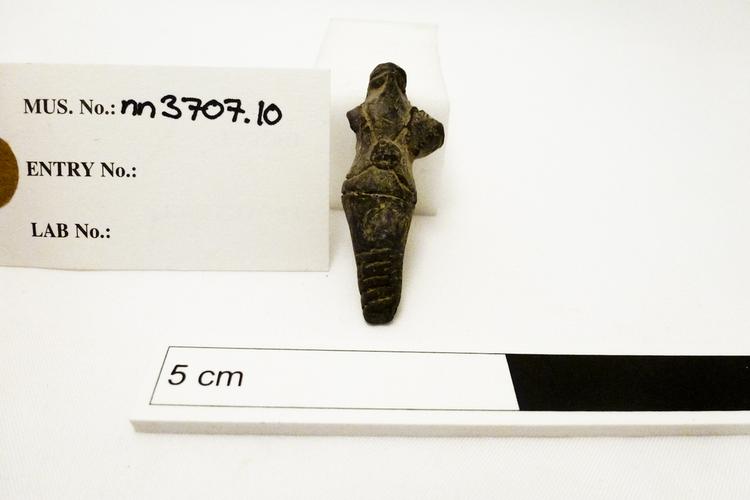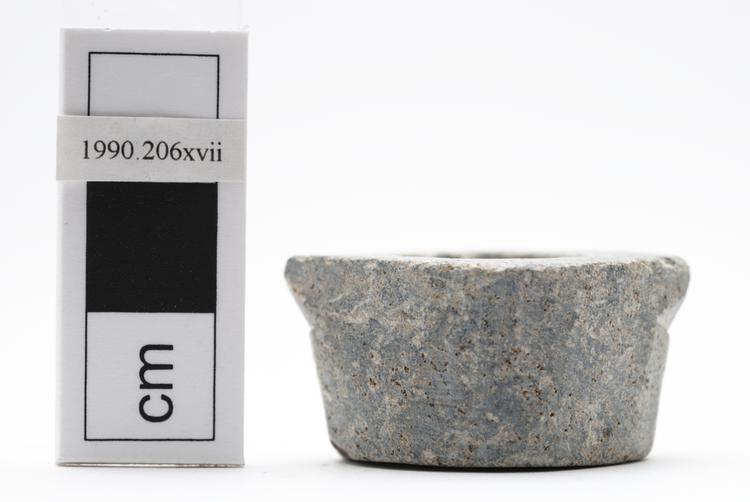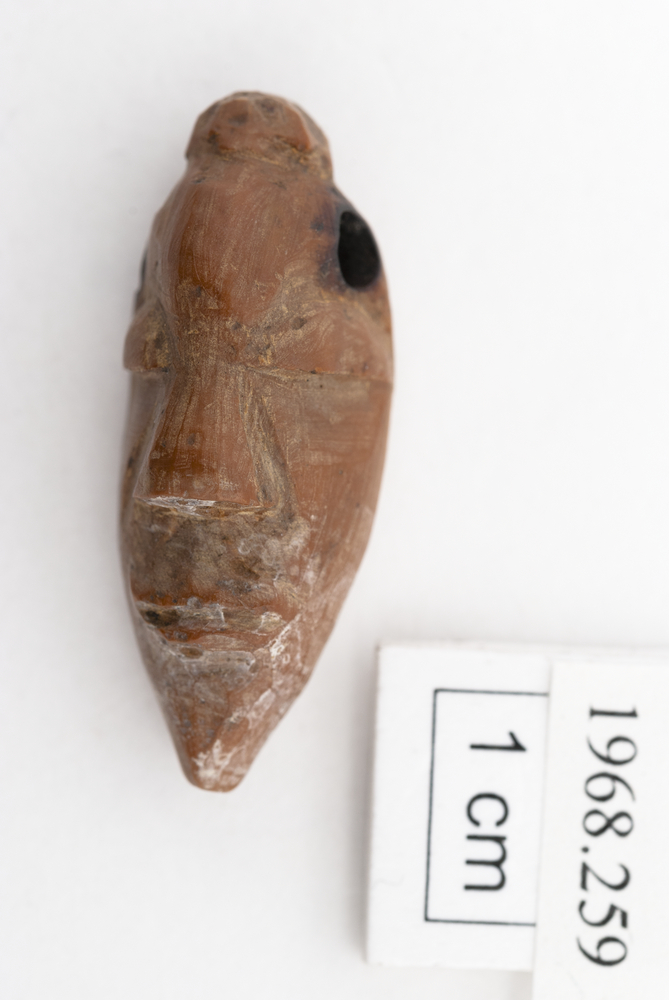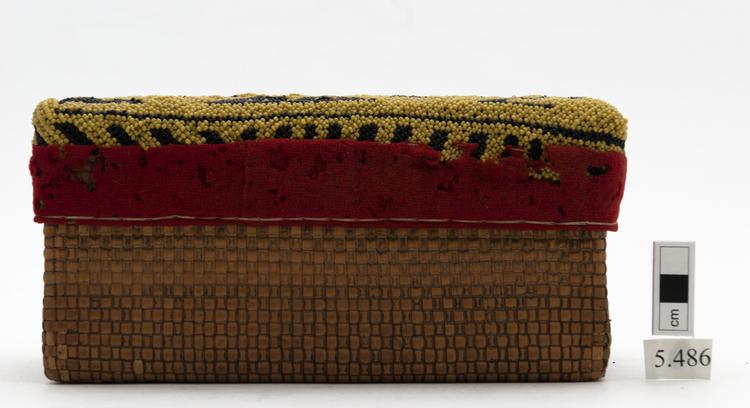
Crudely made standing female figurine in coarse grey terracotta, with a pinched nose, short outstretched arms (both missing), crossbelt with central ornament on the torso front and back, an incised line around the pelvic area, and a series of horizontal incised lines at lower front of the fused legs. Long strands of hair or plaits are incised into the back of the head and back.
A crudely made standing female figurine in coarse grey terracotta, with pinched nose, short outstretched arms (both missing), crossbelt with central ornament on the torso front and back, an incised line around the pelvic area and a series of horizontal incised lines at lower front of the fused legs. Long strands of hair or plaits are incised into the back of the head and back. This piece fits well into the general ‘Sar Dheri’ type of female figurine (pinched nose, cross belt, fused legs) and it needs to be thought of as a votive object, an image probably of a nature or fertility deity. It is tempting to think that a crude version of the type, as seen here, may be earlier in date than the more elaborate versions, but for functional reasons both types or a wide range of varieties may have been in production at the same time and used for the same votive purpose by differing sorts of people. The figure is marked on the back with ‘SD’ (probably Sar Dheri, Charsadda District, Khyber-Pakhtunkhwa, Pakistan). Early Historic Period, probably 1st or 2nd century BCE or earlier (see: Coomaraswamy, 1928 and Codrington, 1931). Archaeological context: presumably unstratified and from a surface collection. Given by Col D H Gordon (1952/3).






